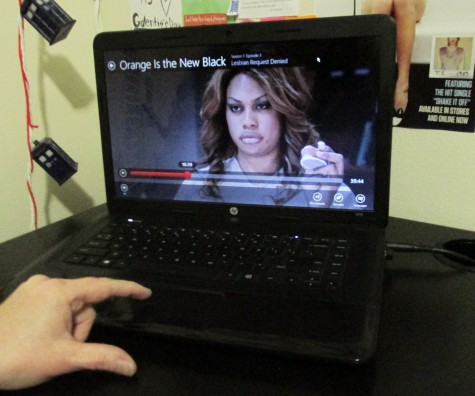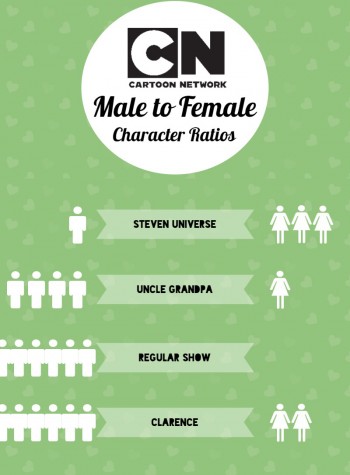The beginner’s guide to third wave feminism
Both second and third wave feminists have found a voice online. With the #yesallwomen tag on Twitter, social media coverage of protests, and sharing experiences with women all around the world, feminists found a better way to come together.
May 13, 2015
Many of the views of feminists born between 1980 and now differ greatly from those of the former generation of feminists. People differentiate between these views by referring to the younger generation as third wave feminists and to the older generation as second wave feminists. Most people agree that these two types of feminists generally share the same views, but differ in more specific beliefs such as views on gender identity, the inclusion and identification of women in the LGBT community and women of color, and views on promiscuity.

Some feminist magazines have started to lean more towards modern feminism, and many of these publications were founded after the start of the third wave in the ‘90s.
Currently, people recognize three different waves of feminism. The first wave, starting in the 19th century and ending in the early 20th century, mainly concerned itself with the women’s suffrage movement. Journalist Marsha Lear of The New York Times first coined the term in 1968 along with the term “second-wave feminism.”
Second wave feminism started in the early 1960s and lasted through the ‘80s. This wave of feminism took the ideas of the first wave and broadened the debate to a wide range of issues: sexuality, family, the workplace, reproductive rights, de facto inequalities, and official legal inequalities. The second wave changed feminism into what people mostly know it as today.
During this time period, many of the terms feminists use today were coined such as “sexism,” “sexual harassment,” and “patriarchy.” They also started to challenge the idea that women are naturally inferior to men. Lesbians, women of color, and working class women criticized second wave feminists, however, for showing a white middle class bias and excluding the issues specific to them, proving that the “unified feminist presence” was a false sense of unity.
54-year-old Kennesaw resident Sheila Volk explains her experiences with second wave feminism: “Within feminism, I’ve had a lot of experiences of straight, white women kind of talking about gender oppression like it’s the be all and end all. And it’s important to talk about, for sure, but as a woman of color, for example, it’s a lot more complicated than that. It kind of feels like I have to choose between my race and my gender.”
Third wave feminism generally started in the early ‘90s and continues to the present. The prominent goal of this wave: fill in the gaps that the preceding generation of feminists left in their movements. Basically, they try to include all of those women that the second wave refused to acknowledge. Race, class, sexuality, and gender identity take center stage in this wave and many groups have found a voice for the first time. Third wave feminists also broadened their goals and started focusing more on issues such as abolishing gender roles and stereotypes.

Many modern feminists support Netflix’s Orange Is The New Black for its incredibly diverse and intricate cast. The trans community also follows the show thanks to one of their leading spokeswomen, Laverne Cox, being a part of the cast.
People can see a difference in these feminist views in the media, with music, movies, and television leaning more towards equality and diversity. One of the most popular shows of 2014, Orange is the New Black, first overtook its audience in 2013 with its incredibly diverse, mostly-female cast. The show takes a strong stand in representing real women, and this means ALL women. The cast includes women of color playing complex and important main characters while also having characters that represent those in the LGBT community. One of the more important characters, Sophia, is played by Laverne Cox, a leading spokeswoman for the trans community.
When asked about the show in an interview with The Takeaway, Cox said, “So often trans stories have been told in ways that sensationalize our identities, that objectify our bodies, and sort of focus on transition and don’t really have the human piece, or the takeaway becomes all about surgery. What’s exciting to me is that there’s a lot of realism, in terms of the real life lived experiences of trans people.”
Newer feminist views also started popping up in animated children’s shows, a perfect example being Cartoon Network’s Steven Universe. Even before the first episode aired by the end of the year in 2013, people expected a major difference in this show compared to others on the channel; this was the first show created by a woman to come out on Cartoon Network.
The creator, Rebecca Sugar, used to work as a storyboard artist for another one of the network’s shows, Adventure Time. Sugar admitted in an interview that she does not see herself as a feminist and never meant to use the show as a platform to advance the cause of women in animation. With women of different sizes and races as the main characters, however, she definitely introduced feminism to the younger generation. Besides the title character, the show features three incredibly strong woman with supernatural powers who make up the crystal gems. They display completely different characteristics, showing their different powers and unique qualities.
The animation also revealed two newer characters to its audiences who represent the LGBT community in a positive light. In the episode “Jailbreak,” fans find out that these two characters, Sapphire and Ruby, fuse to form one of the three crystal gems, Garnet. In “Stronger Than You,” the song Garnet sings in this episode, it implies a romantic relationship between Sapphire and Ruby. After it aired, some parents became outraged. One parent review on Common Sense Media read, “I used to believe Steven Universe was cute and harmless, but after last night’s episode (‘Jailbreak’), I wouldn’t let my children watch it.”
The response from parents perfectly displays the generational gap between older and younger feminists. Younger adults, teenagers, and children showed calmer reactions to the episode and many loved the two characters and the relationship between them. The fact that many parents liked the ideas the show represented up until the introduction of these two characters shows that the involvement of all women in feminism proves more important to third wave feminists than to second wave feminists who mostly see feminism as only applying to certain groups of women.
“I think it’s important to represent a variety of women in the media. I hate it when people call themselves feminists and then don’t stand up for trans women or women of color. If you aren’t fighting for all women, then what are you really fighting for?” said senior Catherine Howard.
Although third wave feminists have formed their own beliefs that go against those of second wave feminists, they still talk about issues that second wave feminists originally set in place. Much of second wave feminism revolved around issues with sexual harassment and rape, and this remains a huge issue within feminism today. Many have even found a stronger outlet for sharing their experiences through social media. Many women spread awareness about sexual harassment and rape through the #yesallwomen tag on Twitter that started in 2014.
Most second and third wave feminists work together despite their differences: “I don’t care if someone believes in something slightly different than what I believe in. No matter what kind of feminist someone is, I would still support them and their beliefs. We don’t need feminists fighting other feminists. We need feminists fighting for equality,” said senior Brichell Blake.





